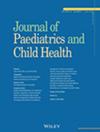No-Biopsy Diagnosis of Coeliac Disease in Children Without Anti-Endomysial IgA Antibody Testing: Combining Anti-Tissue Transglutaminase IgA and Anti-Deamidated Gliadin IgG Antibodies
Abstract
Aim
To determine the utility of anti-tissue transglutaminase IgA antibodies (tTG-IgA) and anti-deaminated gliadin peptide IgG antibodies (DGP-IgG) in detecting coeliac disease (CD) and whether DGP-IgG can replace anti-endomysial IgA antibody in the European Society for Paediatric Gastroenterology Hepatology and Nutrition no-biopsy approach in diagnosing CD.
Methods
Children aged < 19 years who had paired tTG-IgA and DGP-IgG performed and had a gastroscopy with biopsies between 1 March 2016 and 31 October 2020 were retrospectively reviewed.
Results
Of 1206 patients who fulfilled the study criteria, 298 (24.7%) patients were diagnosed with CD. Fifteen patients with IgA deficiency were excluded from any tTG-IgA analysis. tTG-IgA had sensitivity and specificity of 93.5% and 92.0%, respectively, in detecting CD, while DGP-IgG had sensitivity of 97.0% and specificity of 86.7%. tTG-IgA ≥ 10x upper limit of normal (ULN) alone had a specificity of 99.3% and a positive predictive value (PPV) of 96.8%. An optimal DGP-IgG threshold was identified to be 70 U/mL (3.5x ULN) based on > 99% specificity in detecting CD. When tTG-IgA ≥ 10x ULN was combined with DGP-IgG ≥ 3.5 ULN, the PPV in diagnosing CD was 98.5%. DGP-IgG performed well in detecting CD in 126 children aged < 3 years, with all patients with CD having an elevated DGP-IgG (sensitivity 100%).
Conclusions
Combined tTG-IgA ≥ 10x ULN and DGP-IgG ≥ 3.5x ULN provided a high PPV (98.5%) in diagnosing CD. DGP-IgG testing can potentially replace EMA testing in those children with tTG-IgA ≥ 10x ULN. Future studies should evaluate DGP-IgG testing as a sequential test.


 求助内容:
求助内容: 应助结果提醒方式:
应助结果提醒方式:


